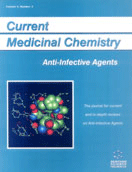Abstract
Interactions between antimicrobial agents and phagocytic cells may influence the outcome of therapy for bacterial infections. An ideal antibiotic would have the desired activity against extracellular organisms, and would also enter phagocytic cells, have no adverse effect on phagocyte function and eradicate surviving intracellular organisms. Another desirable characteristic would be that antibiotic accumulated by phagocytic cells is then carried by these cells to sites of infection, where active drug could be released. Most antimicrobial agents (especially β-lactam drugs) are unable to enter leukocytes efficiently and, therefore, fail to kill intraphagocytic organisms. Nevertheless, a few antibiotics are avidly concentrated by phagocytic cells. These include clindamycin, trimethoprim, macrolide / azolide drugs, and “newer” fluoroquinolones. Azithromycin is concentrated by human PMN to a greater extent than any other antibiotic we have studied. Surprisingly, even antibiotics which achieve high cellular levels may fail to kill antibiotic-sensitive, intraphagocytic bacteria. One potential explanation for the failure of these drugs to kill intraphagocytic organisms is antibiotic inhibition of phagocytic cell antimicrobial function. In fact, several antibiotics (clindamycin, macrolides, trimethoprim) inhibit the oxidative respiratory burst response in these cells. This effect is due to inhibition of phosphatidic acid phosphohydrolase activity, with a subsequent decrease in generation of diradylglycerol and its activation of the NADPH (respiratory burst) - oxidase. Other drugs which alter phagocytic cell activation (e.g. pentoxifylline) may exhibit cellular interactions with the modulatory antibiotics. Avid accumulation and prolonged retention of certain antibiotics (e.g., azithromycin) by phagocytic cells should allow delivery and release of active drug over time at sites of infection (an “antibiotic delivery system”). This release of antibiotic to the extracellular milieu would then represent a true example of targeted antimicrobial therapy.
Keywords: antimicrobial agent, antimicrobials, phagocytic cells, antimicrobial compounds
 14
14

